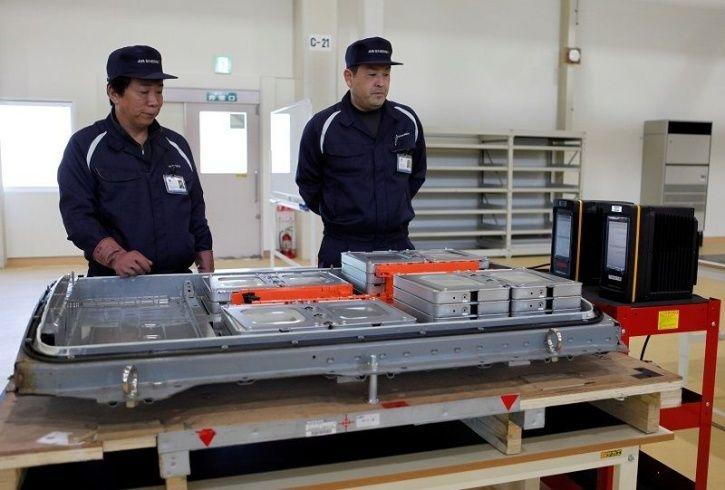
Electric vehicles have started occupying the roads across the globe and looking at the inclination of the industry, consumers and the world governments, they are pretty much here to stay. Not just that, as the paradigm transition takes place in the automobile sector, they are only going to expand in numbers and one look at the set targets by the auto manufacturers will easily tell you that this growth is going to happen exponentially.
It is good, isn’t it? For the consumers, countries as well as the environment. But as they say, ‘too much of anything is bad.’ So while electric vehicles themselves might not be ‘bad’ per se, the corresponding increase in the demand for lithium-ion batteries powering them is poised to be a real issue. A fraction of this problem is how the batteries will be discarded after they are inefficient for these vehicles.
After all, they are batteries. Meaning a chemical composition which is bound to degrade any natural medium in which they are discarded. To prevent this, the said battery waste has to be cut down before it grows so large in number that it starts becoming a problem. And one golden rule of cutting down on waste is ‘Re-use’.
Solution #1
That brings us to the first solution of the problem. EV batteries are deemed unfit for the vehicles when their efficiency drops down to 70 percent of their original prowess. As per the claims by most of the auto makers, this tenure lasts almost a decade. This means that while the batteries will not be able to run a vehicle with the same competence, they are still very much operational.
So an obvious way of reusing would be to put them to other uses until they die down to zero. Most of the battery makers are already following this and have found several ways to put such batteries to use. A common method, is to appoint them with solar panels or practically any other renewable source of energy which needs storage. This, can be further used to power homes, office setups or any or every facility that draws power from the grid.
Though this might not be enough to eliminate the dependency on the power grid, it still can act as a huge deterrent from it. As of today, such an arrangement of used EV batteries as well as new ones are being used to power the Johan Cruyff Arena in Amsterdam. A collaboration between Nissan, Eaton, BAM, The Mobility House and the Johan Cruijff ArenA, the one-of-its-kind setup claims enough power to back up the 7000 Amsterdam houses for one hour, or charge 5,00,000 iPhones. The “green” impact can be measured from the fact that it claims to save 116,683 tons of CO2.
So if such a wide-scale model is successful, a miniaturised version for supplying green energy to homes isn’t out of bounds at all. That is exactly why the idea is being accommodated by companies like Nissan. Though it is not too widespread for one practical purpose, which coincidentally also brings us to our next solution.
Solution #2
The problem with using old EV batteries for energy storage for homes is the fact that these batteries are too ‘high-class’ for such a use. The effort and money that goes into making such batteries is way too much for a stationary use as in the case of homes. Citing this reason, Mercedes-Benz exited the home energy business just after a year of its operation. That, however, might not be the best reasoning for restricting the reuse of a hoard of batteries which are already going to waste.
As with any other waste, recycling is one way to go. There are firms operating to do this, taking out precious metals from the EV batteries for recycling. There are hindrances and the process is not a piece of cake, but it works for them, meaning it should work for the others too.
That is also why all the major battery producers, including Tesla, are looking for ways to recycle their batteries as well, essentially creating a loop of battery production. It might take time for the companies to set the process in place, but this is a definite in the pipeline for almost every major battery player.
Solution #3
Again, like any other resource, humanity demands alternatives, and that is true even in the case of EV batteries. Now you might be wondering that the EV batteries have only started to emerge on the main scale. But consider the fact that lithium-ion batteries have been powering almost every gadget known to humankind today. Using the same for electric vehicles only adds on to the pressure on the required resources, which are of course, limited.
One such resource is Cobalt, which for now, is primarily found in the Democratic Republic of Congo. Though it might be enough for now, an escalating future towards its use will land it in the same situation as the fossil fuels, slowly but surely.
To avoid this, there are researches taking place to use alternate chemical combinations for batteries. A prime focus among these are the solid state batteries, which use a solid electrolyte instead of a liquid one. While these are still under a development phase for EVs, they are anticipated to provide an even better efficiency than the other battery types.
BMW, Toyota and Dyson are among the ones which look at solid state batteries as a potential alternative for their products in the near future.
The end game
Irrespective of which of the alternatives is appointed in doing away with lithium-ion batteries post their maximum efficiency, neither the limited availability of the metals nor the impact on environment allow us to discard them as a waste. So going forward, all the major battery players should designate one or the other process for the battery waste.
